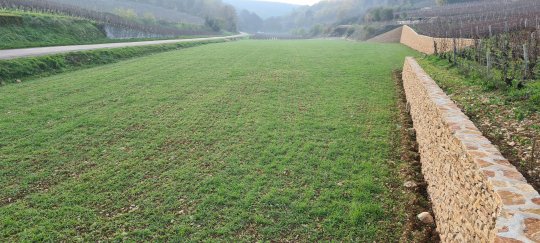Planting cover crops is recommended on a resting plot for several reasons:
-
To protect the soil: the microorganisms and organic matter in the soil are sensitive to the sun's UV rays: a bare soil is more directly in contact with UV-A and B rays than a covered soil. Extended exposure can destroy certain bacteria and microorganisms beneficial to soil life.
-
To protect the soil against nematodes: some species have nematicidal properties and can potentially fight againt an infestation that caused the grubbing up in the first place. Some examples of crops would be : alfalfa, oats, hairy vetch, coriander.... Barley is also said to have protective properties against root rot. According to the IFV, seedlings sold as nematode-resistant are not necessarily effective against the Xiphinema Index species, also known as the California dagger nematode, which is the main vector of Gravevine Fan leaf virus, since the rooting depth does not exceed 150 cm. However, they are proven to be effective against other species of nematodes, which are responsible for direct damage to the plants.


